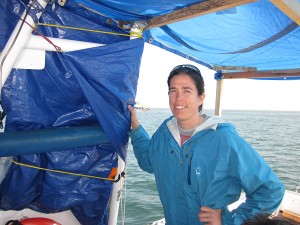Active margin stream evolution over the most recent sea-level cycle

Assistant Professor
San Diego State University
Wednesday, September 9, 2020
1 pm
watch Jillian’s talk here
Abstract
Sea-level changes have occurred throughout Earth’s history at various timescales, with the most recent global sea-level fluctuations of ~120 m occurring about every 100,000 years. As sea level fluctuates, streams adapt to a changing base level, with streams extending across the continental shelf during times of low sea level. The earliest models to assess how streams respond to sea-level changes indicated stream incision during dropping base level and aggradation during rising base level. However, more recent models and observations suggest multiple factors that influence stream evolution through sea-level cycles, including climate, basin characteristics, and continental shelf morphology. Furthermore, most data and models are based on passive margin settings, which have different morphology and geologic processes than active margins. I will present high-resolution seismic data from the continental shelf at three locations along the active U.S. Pacific margin: central Oregon, the northern Channel Islands, and the Silver Strand littoral cell in San Diego. These data highlight some of the characteristics of the continental shelf extensions of streams during lower sea level and add to our understanding of stream evolution on active margins. Understanding this evolution is important for global sediment processes, hydrogeologic models, hydrocarbon resources, and archaeological investigations.

